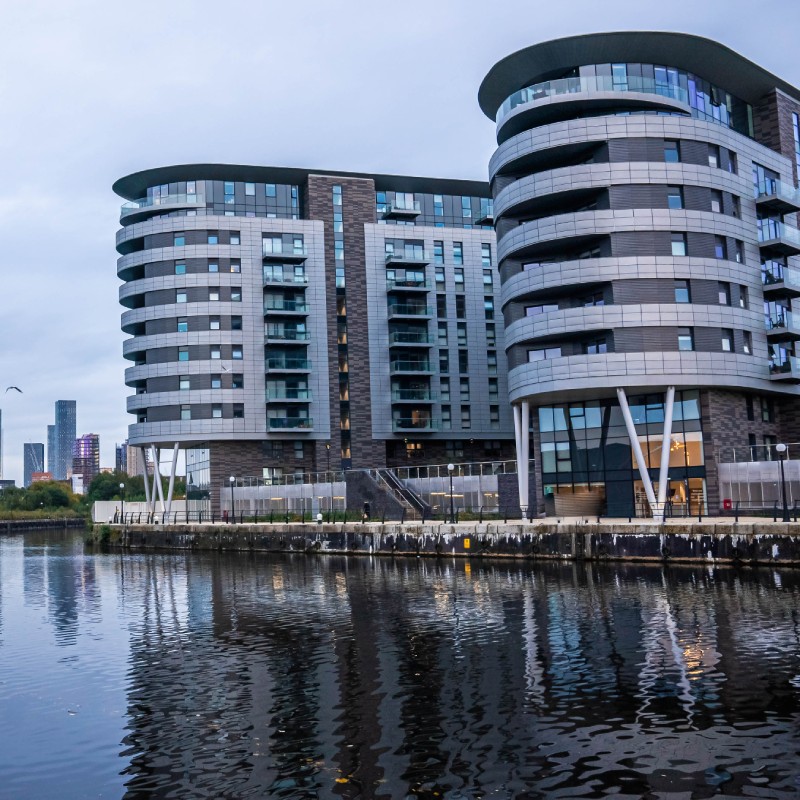What are bridging loans?
Bridging loans are short-term loans, of around 3-12 months, although longer terms are available. The loan is secured against a property, so if you are unable to keep up with repayments you could risk losing your home.
Bridging loans can be an expensive way to borrow money but they can be a useful tool if used correctly.
They are not generally available from high street lenders, but there are a number of specialist bridging finance lenders who can offer competitive rates.
If you’re thinking of taking out a bridging loan, it’s important to compare different lenders to make sure you get the best deal. You should also speak to an independent mortgage advisor to ensure that a bridging loan is the right option for your circumstances.
What are the benefits of bridging loans?
There are a number of benefits that come with taking out a bridging loan, including:
- They can be a fast way to raise finance. If you need money quickly, a bridging loan could be the ideal solution.
- They can be used for a variety of purposes. Whether you’re buying a new property before selling your old one, carrying out renovations or refurbishments, or raising working capital for a business, a bridging loan could be the right option.
- They are very flexible.
- Cross-collateral bridging finance is available using multiple properties
- Bridging loans can be tailored to your individual needs and circumstances.
What can bridging loans be used for?
Bridging loans can be used for a variety of purposes, including:
- Buying a new property before selling your old one
- Carrying out renovations or refurbishments
- Raising working capital for a business
- Buying a property at auction
- Buying an uninhabitable property
- Financing planning gain
How much can you borrow?
You might be surprised to learn that bridging loans are not based on your earnings, or your affordability.
The loan is based on the value of the property, with most lenders offering up to 75% loan to value.
So if the property was valued at £200,000, you could potentially borrow £150,000.
It’s important to know that bridging lenders work from their own valuation, which may be different to the figure you are thinking of!
VAT Bridging Loans
When you buy a commercial property the purchase price normally has VAT at 20% added to it, dramatically increasing the amount of cash needed.
While a commercial loan will provide some funding towards the acquisition costs, this will not include the VAT element.
A VAT bridging loan is a solution designed to cover this additional amount of tax. The lender covers the VAT part by way of a short term loan, and you pay it back when you get a refund on your next VAT return.

What are the benefits of using a broker to find a bridging loan?
As with any loan, it is important to shop around and compare different options before choosing.
However, due to the nature of bridging loans, this can be a more complex process than for other types of finance, especially for a cross collateral bridge loan. This is where using a broker can be extremely helpful.
A broker will have access to a wide range of lenders and products, and will be able to advise on the most suitable option for your individual circumstances. They will also be able to negotiate on your behalf to get the best possible terms.
You will find that most bridging lenders prefer to get their business from brokers, rather than from borrowers direct.
Using a broker can save you time and hassle, and could even end up saving you money in the long run. So if you are considering taking out a bridging loan, make sure you speak to a broker first.
Not on the High Street!
The high street lenders can’t help every mortgage customer and they prefer the simple, low-risk ones.
If your situation is a bit different or needs a more personalised solution then our brokers can help.
Expert advice, for all situations.
Bridging Loans
The most flexible of secured loans and often misunderstood. Bridge loans can be used in so many different ways and can be arranged super fast.
Large Loans
High net worth mortgage brokers understand complex large loans and unique situations and can source bespoke deals from the right lenders.
Let to Buy
Let to buy combines a buy to let remortgage with a residential mortgage. Allowing you to move house while keeping your current home.
How to get the best interest rate on a bridging loan
When shopping around for a bridging loan, it is important to compare not only the interest rates but also the fees and charges associated with the loan. Some lenders will charge higher fees for arranging and administering the loan, so it is important to take this into account when comparing different options.
The interest rate you are offered will also depend on your personal circumstances, such as your credit history and the value of the property you are using as security.
The best way to get an idea of the interest rates available is to speak to a broker who can provide you with quotes from a range of lenders. You can obtain a copy of your credit report to see if there’s anything that might cause an issue.
Can you get a bridging loan with bad credit?
Many people believe that if they have a poor credit history they will get turned down for any loan application. This is probably true for many forms of loans such as mortgages, credit cards, and bank loans, but is not necessarily the case for a short term bridging loan.
If you have a good credit history and equity in your property, you may be able to negotiate a lower interest rate with the lender. It is always worth asking for a lower rate, as you may be surprised at what you can achieve.
How do bridging loans compare to other types of loans?
Bridging loans differ from other types of loans in a number of ways, the most notable being the shorter term and the fact that they are typically used for a specific purpose.
The lender will ask about your exit strategy, this is ‘how’ you plan to pay them back. Our article What are some common exit strategies for bridging loans? explains this further.
Other types of loans, such as personal loans or mortgages, can be used for a variety of purposes and usually have much longer terms. This means that they are not as suitable for short-term finance needs.
Bridging loans also have higher interest rates than other types of loans. This is because they are seen as a higher risk by lenders, so they charge a premium to offset this risk.
Despite the higher interest rates, bridging loans can still be a cost-effective way to raise finance, particularly if you are able to negotiate a lower rate. And because they are typically used for a specific purpose, you can be sure that the money you borrow will be put to good use.
Our Guide to bridging loans expands on many of these topics and you may also like to read about some successful strategies for repaying a bridging loan.
Borrowing against commercial property
Most people are familiar with the ability to use a bridging loan to avoid a property chain break-up, or to quickly get money to buy a property at auction.
But as these lenders will pretty much lend against any type of property, you can also use them for commercial properties and buildings.
The process and benefits are largely the same, up to 75% LTV and fast decisions.
Learn more: Commercial Bridging Loans


